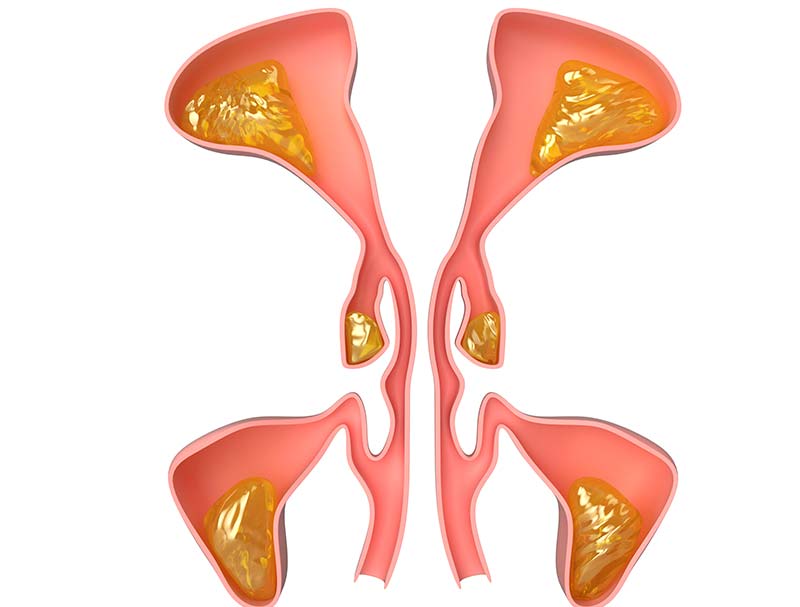

The main purpose for any type of sinus surgery is to clear whatever happens to be blocking your sinuses in some way.
We all have sinus cavities located around the nose, eyes, and front of the face. They work together to promote a steady flow of air while also making the skull lighter and adding moisture to nasal passages.
If there is a blockage that’s affecting airflow or contributing to frequent sinus infections, sinus surgery may be the recommended treatment for you if there is no other way to restore normal sinus functions.
Why Might Sinus Surgery Be Necessary?
From tiny pieces of bone and swollen or damaged tissue to nasal polyps and tumors or growths, there are many possible types of obstructions that could require surgical intervention. Sinus surgery may also be recommended because of:
- Issues with chronic sinus infections (sinusitis)
- Blockages that are increasingly affecting nasal breathing
- Significant inflammation within sinuses or nasal passages


How is It Done?
Endoscopic sinus surgery is the most common approach to sinus surgery. It’s done with specialized instruments and a flexible, lighted tube with an attached camera (endoscope). Because everything is done through the nostrils, there is no scarring. This type of sinus surgery is often an outpatient procedure that only results in mild discomfort that goes away once tissues heal.
Image-guided endoscopic surgery is similar, except a near-three-dimensional mapping system is used to help the surgeon with instrument guidance. The detailed images are produced with a combination of CT scans and infrared signals. This approach to sinus surgery is likely to be recommended when there is a need to be very precise with obstruction removal.
If there is a growth that needs to be removed in a sinus cavity, the most appropriate option with surgery may be a Caldwell-Luc operation. It’s done by creating a pathway between the sinus cavity located below your eye (maxillary sinus) and your nose. This pathway helps with drainage. The sinus cavity is accessed through an incision made in your upper jaw.
What Happens After Sinus Surgery?
It’s common for nasal packing to be used after sinus surgery. This minimizes bleeding as tissues heal. Some packing is absorbable, which means it will naturally dissolve over time. If the packing is non-absorbable, it will need to be removed during a follow-up visit. Depending on your level of discomfort, you may be given medication to help ease pain and inflammation as you recover. During the recovery period after sinus surgery, you may also be advised to:
- Avoid blowing your nose
- Report any instances of increased nasal congestion
- Be cautious with your level of activity to avoid unintentionally placing excess pressure on your nose and areas where your sinuses are located
Take comfort in knowing sinus surgery performed today often involves minimally invasive techniques and methods whenever possible. This means you’ll be more likely to enjoy a shorter recovery time and fewer surgical risks. But if you do wish to explore other options, nasal sprays, nasal saline rinses (nasal irrigation), and oral steroids are some of the alternatives to consider. Your doctor at the Nasal & Sinus Surgery Center can help you determine next steps.
